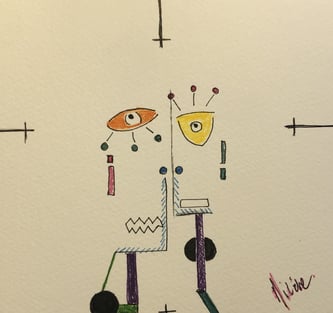How to Listen to Build?
Micène Fontaine, May 20, 2021
Who listens when you need to talk? Who do you call? How do you feel after having talked to them? The fact that most of us know exactly who we would call tells us how important and rare it is. Are you the one others call? Do you consider yourself to be a good listener?
Judging by the number of books on my shelves about the art of listening, you might think I’m a good listener. I am not, at least not all the time. I know what to do, but these best practices tend to go out the window alongside my best intentions when they are needed the most. I know - and I know you do too - that few things matter more in any personal or professional relationship than others feeling and being heard and seen. And, yet, I often interrupt or think of my answer as the other one talks assuming I know where they are going, and - on occasion - I entirely get lost in my thoughts.
Zoom in on the built environment, and the importance of listening extends to clients and other stakeholders in a project, which is why articles on the topic abound. Some authors wonder: “Has architecture lost touch with people?” while others humbly ask: “Architects: Are you listening?” If you ascribe - as I do - to the idea that architecture and design are ultimately about serving people, then listening is arguably your most essential tool. But, who to listen to? Think about it. The number of voices quickly multiplies. Indeed, projects are not built in a vacuum. But in the context of a community, with all its intricacies and interconnectedness. And people interacting with each other and the built environment. Some voices will be louder than others, so who will you hear? The voices of those paying the bills or of those using the space? What about those who live, love, work, and play in that community? If this weren’t enough, there is also listening to the site, listening for the emotions between the words, allowing for silences without the urge to fill the gaps, and uncovering what would have otherwise been left unsaid. All that, without losing your own voice. It’s hard work, which is why Listen to Build is one of the sessions in our Change by Design series :-)
With stakes that high, here are a few things to keep in mind (gleaned from two of those books on my shelves You’re Not Listening by Kate Murphy and We Need to Talk by Celeste Headlee):
- Stay humble. This is about allowing someone else’s experience to co-exist with ours without invalidating either. We can’t help but see the world through the lens of our own experiences, so you are off to a great start if you can do this. It does not mean you have to agree :-)
- Stay present. Those who practice mindfulness meditation might find that a bit easier. It’s about gently bringing yourself back to what is being said rather than lost in your thoughts or formulating an answer, or wondering how on earth did they get to that conclusion?
- Stay curious. Don’t assume you know or should know. Ask clarifying questions until it makes sense to you. Simple prompts go a long way: Help me understand, what do you mean by ….? Or, can you tell me more about ….? and don’t be shy about summarizing what you understood before answering.
- Pay attention to body language and other non-verbal clues.
- Make peace with silence. Hold space for processing time - yours or theirs. This one is particularly challenging in western cultures.
- And, when you are the one doing the talking, regularly check in with those listening to you to make sure you are making sense - to them. Pause regularly and ask: Am I making sense? Do you have any questions so far?
Granted, this is all easier said than done. So, for a crash course on “conscious listening,” check out Julian Treasure’s 8-minute TED talk “5 Ways to Listen Better”. and for a deep dive as it relates to the built environment, check out our Listen to Build session with Wandile Mthiyane, founder of Ubuntu Design Group.
Here is to listening to build - by design.






